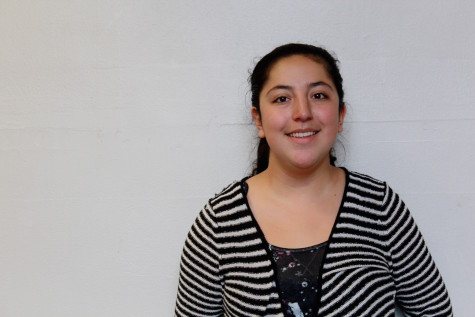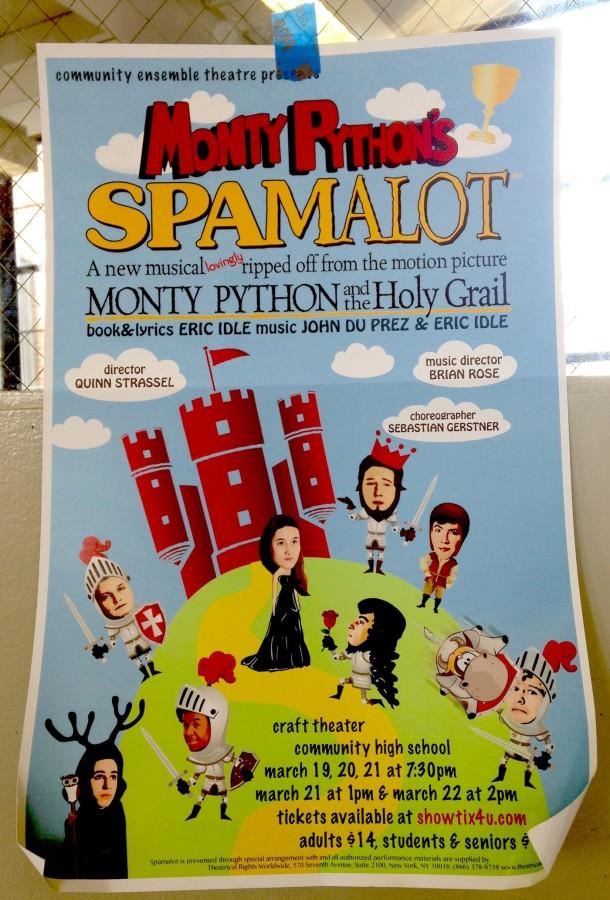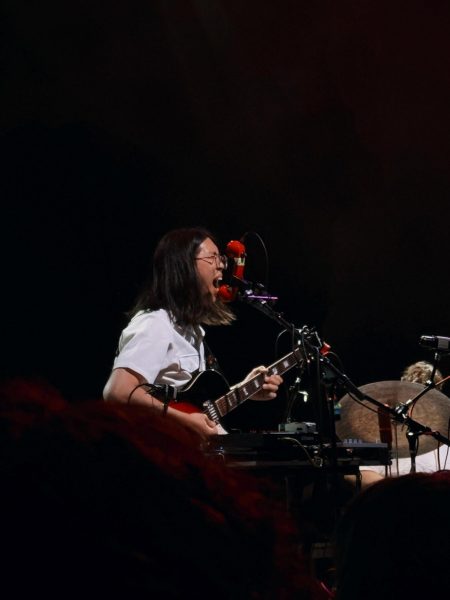Behind The Scenes of CET
As a journalist and former member of CET, I was given the privilege to follow the cast and crew around last night during their open dress rehearsal. When I left, I was truly amazed by how much hard work and dedication was put into this show. Here is an an inside scoop as to what goes on behind the scenes.
3 p.m: “Has anyone seen the grey stuff that goes over here?” shouted the director, Quinn Strassel. As the school day comes to an end, students start to head home. But for some, the day has only just begun. From now until 10 pm, these students will be working hard on a show that they’ve put so much love and hard work into. Some stay much later. This is the average day of a student in theatre during tech week.
3:15 p.m: “Isaac, stop smiling. This is CET, man,” said Phoebe Engel, the assistant stage manager. Theater isn’t all fun and games. Works needs to get done before opening night. Whether it be painting sets or wiping seats, one thing is clear: there will be no breaks, except for dinner, until the work is done.
3:30 p.m: “You guys have five minutes before you’re getting in costumes. Five minutes.” As the final touches are applied to the set, actors rush to get into costumes. The real tough work is about to begin
3:33 p.m: “Let’s do it,” said Strassel. “You ready?” Actors head on stage, ready for anything that the director chooses to throw at them. Last minute changes are normal during tech week. As a fellow actress myself, I have been subject to many of these last minute changes, some even minutes before the show. As they are preparing to begin, many sounds can be heard. The sound of vocal warm ups occurring backstage. The sound of fidgety feet, slapping the ground while silently rehearsing a dance.
3:45 p.m: Backstage is where the real magic happens. Actors hustle and bustle to get into costumes and makeup. Everyday students are transformed into anything: a king, a knight, a peasant, someone who is not dead yet.
4 p.m: “Quiet in the theater please,” shouted Strassel. “In fact, can everybody leave except for these two?” It is rare, but it does happen when all unnecessary people are kicked out. No exceptions.
4:10 p.m: Actors pile into the theater. All thoughts and worries are put aside. Theater is a very demanding activity which requires the full mind and body of the actors.
4:15 p.m: Warm-ups have begun just outside the theater. “Take a deep breath.” Relaxation is key when it comes to preparing to perform.
4:30 p.m: Backstage is quiet, a rarity during shows. Except for a few actors getting ready and techies, another name for members of the crew, moving the final things into place, there is peace. Calm. The quiet before the storm.
Outside the theater, actors are once again warming up, this time with the use of tongue twisters focusing on diction. As an actress myself, I know that loose facial muscles lead to good facial expressions. Good diction also enhances the audiences experience, since they will no longer have trouble understanding what is being said.
4:40 p.m: The intensity backstage begins to pick up. There are missing costume pieces and props, and it is up to the crew to fix this.The director calls the cast in. After an inspiring speech, they are ready to begin.
4:45 p.m: Because there is an audience present during the dress rehearsal, the curtain call is the first thing to be rehearsed.
“Our job is to keep the curtain call moving,” stated Strassel. “Don’t take your time, but don’t rush. Move with purpose. Get to your spot. Don’t over-do it.”
5:10 p.m: The atmosphere is intense. Nailing this curtain call is very important. The end of the show can be nothing short of amazing.
“Always look at the bright side of life!”
5:30 p.m: Dinner is served. The cast and crew head to the third floor, lining up in order of their grade level with Seniors going first. No words can explain the feeling of having to wait in line for food after a very tiring, stressful rehearsal.
But as soon as they do, there is relief from the stress of school and theater. As people enjoy their meals, they completely let loose and relax. After all, they still have a very long night ahead of them.
6 p.m: Dinner is over. The cast and crew head back to their positions. Half an hour. Half an hour until they have an audience.
6:30 p.m: The audience waits in line patiently to see the show they’ve heard so much about these past few weeks.
6:45 p.m: The lights go down in the theater. A fanfare plays. This is it. The moment everyone has been waiting for. Whatever mishaps happened earlier must be put aside. The show has officially begun.
The show begins with a historian talking about England during the year of 932 A.D. But for some odd reason, the next scene takes place in Finland. Apparently, there was a misunderstanding on what the historian had said. The audience just loved this.
7 p.m: Backstage isn’t so calm. The first few scenes require a few set and costume changes. It is impossible to walk backstage without getting run into.
7:06 p.m: The teachers brought a surprise to the stage. A surprise that caught everyone’s attention. And it sure made the audience laugh. What it was, however, I shall not tell.
7:30 p.m: Accidents are rare, but they do happen. An actress has fallen and twisted her ankle while getting off stage. This is the first of many accidents that are bound to happen due to tight spacing backstage.
7:40 p.m: After an amazing first half of the show, it is time for intermission. The cast rushes back into the dressing rooms. Fifteen minutes. That’s all the time they have to get ready. Fifteen minutes to change and rehearse. Then it is back to the stage.
As I step out of the dressing room, I witness two girls in the stairwell rehearsing their umbrella dance. A good thing, too, as they had to improvise what to do if one of their umbrellas flipped inside out – which wound up happening during the show
The crew is running around backstage. A lot needs to get done during these fifteen minutes. There are costumes to fix, makeup to get done. Techies are moving frantically to make sure that everything is ready for the second half of the show.
Finally, in the theater, the director is running scenes from the second half, preparing his actors for anything that could go wrong.
8 pm: It is time for everyone to head back to their places. The second half of the show begins with a bang.
8:25 p.m: The lights and sound crew are working very hard to stay on top of their cues. Any mistakes or late changes could be catastrophic. And of course, nobody wants to face the wrath of a furious tech director
8:45 p.m: The buzz backstage has not settled down. There is a feeling of uneasiness. Crew members are on the edge of their seats, ready to jump in and help at a moments notice.
“Everybody quiet backstage please,” said Deb O’Neal, former CET mom and current costumes manager.
The cast and crew struggle to stay quiet and maintain their composure. A bottle of Febreze has broken, and some poor guy’s regular clothes are now soaked with air freshener. This is just an example of the many strange and hilarious things that happen in theater, especially during tech week and shows.
9 p.m: And now, the least rehearsed moment of the entire show: the curtain call. Having just learned it today, the vibe and energy onstage is amazing. The audience is fully engaged, clapping non-stop.
9:20 p.m: But their day is not over quite yet. In fact, some might even say that the second most important part is about to begin: notes. Anything that went wrong was noted, and is brought up again at this point in time.
Overall, CET pulled off a pretty amazing dress rehearsal “show.” The costumes were absolutely astonishing. The sets and props were on point. The cast and crew took the audience back in time to England in 932 A.D, where they laughed and sang along as they witnessed King Arthur and his strange group of knights on their quest to find the Holy Grail.










